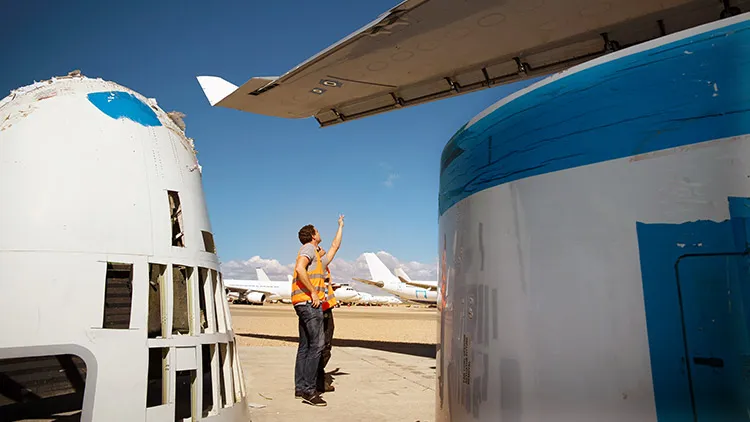Lufthansa Upcycling Collection
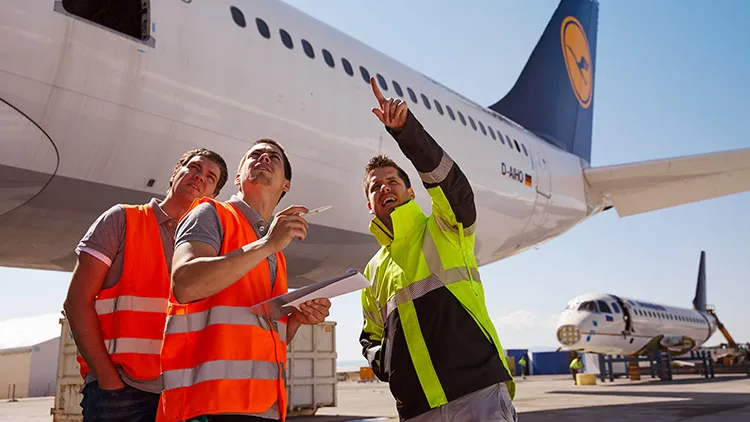
An Airbus is turned into exclusive lifestyle furniture
In a quiet, sparsely populated area in Spain, on a plateau high in the mountains of Aragon, guests can witness an unusual sight. Close to the small town of Teruel, at an altitude of more than 1,000 metres, Tarmac Aeorosave is operating an enormous parking area for over 250 commercial aircraft. The dry climate of the region is ideal for parking and refurbishing aircraft, or dismantling them if they are to be scrapped.
This is also where the decommissioned Airbus A340-600 D-AIHO, which was in use by Lufthansa for more than ten years, is being expertly disposed of. The "Cheesecutter" chainsaw used for precise disassembly of the hull into individual parts is already in place. But first, as many reusable parts as possible are to be salvaged – many of them for an exclusive collection of designer furniture and accessories for the Lufthansa Upcycling Collection.
Hilke Siebecker and Christiana von Dewitz, product managers at Worldshop, as well as the heads of two manufacturing companies in Germany, have travelled here for this purpose. Amongst other things, Wilco Design from Marpingen in the Saarland manufactures couch tables and wall-mounted bars made from aircraft materials. Cologne-based Aviationtag makes key fobs from parts of the aluminium shell.
"For us it's an exciting challenge to stand in front of the plane and to visualise what could become of it one day", says Marius Krämer from Wilco Design, while a lifting ramp takes him and his business partner Julian Schneider up to the cabin. The two entrepreneurs, both hobby pilots themselves, travelled to Spain to mark the parts they can use for the Lufthansa Upcycling Collection.
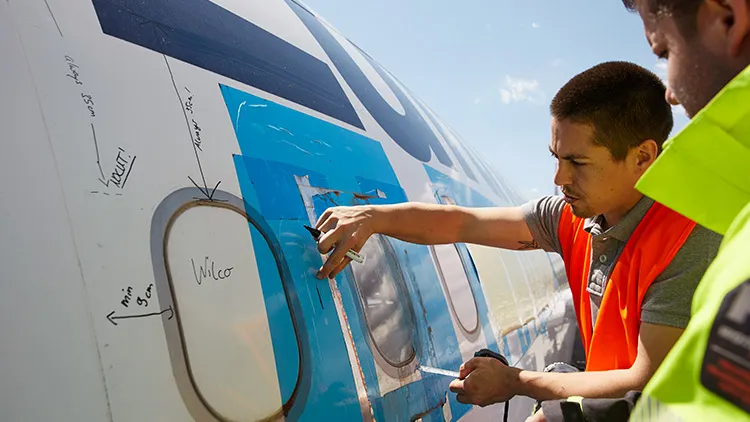
A piece of aviation history for your pocket
"We're particularly excited about the windows, which we're later going to use to make wall-mounted bars", they explain as they enter the gutted aircraft. Tobias Richter and Stephan Boltz from Aviationtag are just busy removing the insulation from the aircraft walls to examine the condition of the outer shell from the inside. The aim is to eventually produce 35,000 key fobs from the Airbus aluminium - with the sections containing the Lufthansa logo likely to be extremely valuable and desirable. "For aviation fans it's great to be able to keep a piece of aviation history in their pocket", says Boltz.
Krämer and Schneider from Wilco Design are back on the lifting platform with folding rulers in hand, measuring the window segments they require for the wall-mounted bars. The A340-600, which measures 75.50 metres in length and was the longest passenger plane in the world at the time of its launch in 2001, offers a lot of material suitable for this purpose.
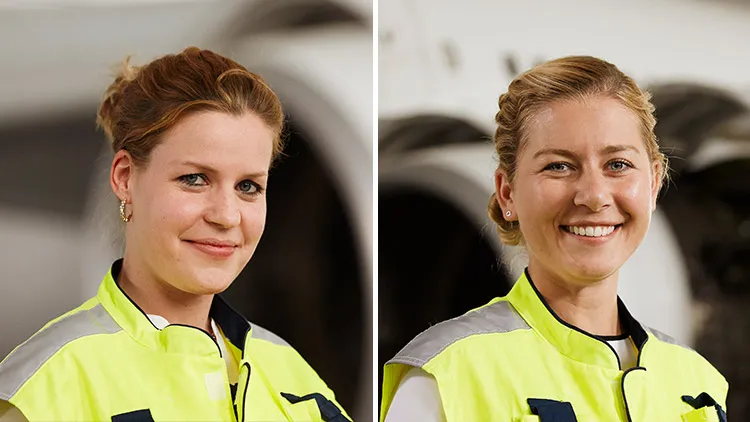
92 percent of an aircraft is recycled
Below the hull of the aircraft, recycling manager Ignacio Guillén Trasobares shouts above the noise of the sawing operations: "It takes eight to ten weeks to dismantle an aircraft." Irrespective of whether it is aluminium, copper, glass or rubber: all components must be neatly separated from each other so that the recycling companies can use them. 92 percent of an aircraft is recycled in this way.
But it is not always easy for aviation fans to see when at the end all that's left of an aircraft is cables, metal sheets and screws. "But the fans should be patient. That's why we're so eager to keep old aircraft alive in a different form", says Marius Krämer, whose favourite way to fly - as a private pilot - is in a Piper P 28 or a Cessna.
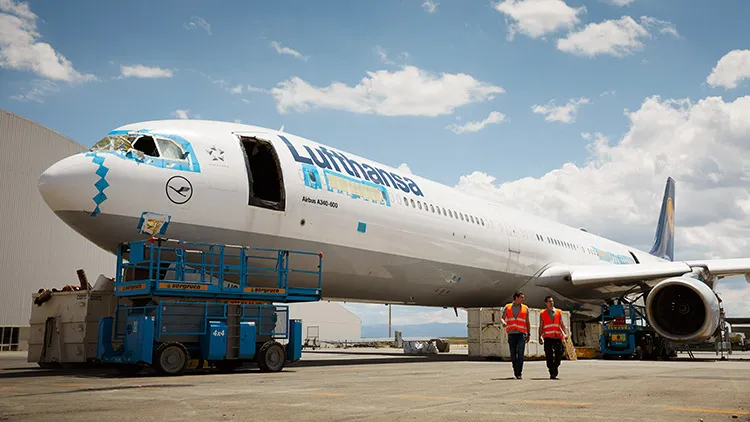
"We're still a long way from running out of ideas"
